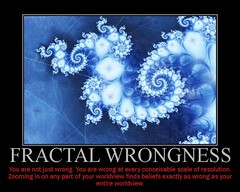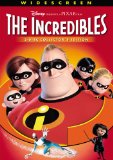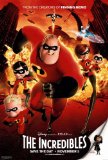Planning out a novel? Be sure to join my newsletter for a FREE plotting/revision roadmap, and check out the full series on plotting novels in a free PDF!
The Snowflake Method of story design is just one way to create a plot—but it’s not the best way, nor is it even a good way for all of us. (And we’ll continue to look at more methods to plot stories over the next two weeks.) We’ve already seen how Carol adapted the Snowflake Method to suit her needs as a writer, using its strengths for her and discarding its potential weaknesses. So what are the potential strengths and weaknesses of the Snowflake Method, so we can do this for ourselves?
Pros
After spending so much time refining them and writing about them, you get to know your characters and your plot well. Really well. Before you even write one word of your story, you have pages and pages of information on the characters, their backgrounds, how they see the story unfolding. You know the events, the sequence, the logic there.
 Another strength is that you can start with almost nothing and “grow” a plot “naturally.” If you start with just the most basic idea—say, National Treasure for the Amish or something ;)—you can develop your characters and your plot.
Another strength is that you can start with almost nothing and “grow” a plot “naturally.” If you start with just the most basic idea—say, National Treasure for the Amish or something ;)—you can develop your characters and your plot.
Also, the method’s steps alternate between working on characters and on the plot, ensuring that you develop both—but that you don’t have to spend so long working straight on each one that you get bored.
Simply put, if you like to know as much as you can about a book before you start writing, this can be a great way to discover your characters and their storylines.
Cons
On the other hand, using this method can lead to analysis paralysis—you can spend so long trying to perfect your outline and your character profiles that you never actually get around to writing anything.
Or, somewhat conversely, if you go through the first nine steps of this method, for some writers that level of detail in planning can sap the fun out of writing. For all the writers I know, the joy of the journey of writing is in discovery, and if you’ve made all your discoveries before you start writing, sometimes there’s nothing left to motivate you to write on.
 And I can say this from experience. Yes, while I am a fully converted pantser, I forgot to mention that my first attempts at plotting almost put me off the practice forever. I used the Snowflake Method to plot two books in between my second and third completed manuscripts. I managed to slog through fourteen pages of notes, outlines and character profiles (through step six) before I let myself get to actually writing.
And I can say this from experience. Yes, while I am a fully converted pantser, I forgot to mention that my first attempts at plotting almost put me off the practice forever. I used the Snowflake Method to plot two books in between my second and third completed manuscripts. I managed to slog through fourteen pages of notes, outlines and character profiles (through step six) before I let myself get to actually writing.
And it wasn’t any fun. It was an intense struggle to get out a mediocre first chapter. (I’m okay with mediocre first chapters in first drafts, of course, but for the amount of effort made it at least mediocre—well, if I didn’t enjoy writing it, why would I believe anyone would enjoy reading it?) Although I loved and still do love the idea, I don’t know if I’ll ever be able to write that book now.
(Luckily, I’ve tried a few other methods with more success, which we’ll get to next week.)
Lastly, like the act structure, the Snowflake Method doesn’t give a whole lot of direction for the actual events. I sometimes turn to plotting hoping that I’ll find a plotting method that will tell me exactly what I should have my characters do next. Yeah, not so much.
But beyond “three disasters and an ending,” there’s very little direction in the Snowflake Method on how to get from A to B. There’s just not much in the way of actual structure for a story. Next week, we’ll start looking at methods with a little more guidance on what kind of events and disasters we should have to help craft compelling, non-rambling stories that move along with purpose toward our goal.
What do you think? What other strengths and weaknesses do you see in the Snowflake Method? Have you tried it?
Photo credits: growing plants—Daniel Greene; writer’s block—Jonno Witts
 The first step in the
The first step in the 
 In step four, we come back to our plot summary and expand each sentence from that paragraph into a paragraph of its own, making the summary roughly a page, too.
In step four, we come back to our plot summary and expand each sentence from that paragraph into a paragraph of its own, making the summary roughly a page, too.





 In a romance, it’s “Will the boy win the girl?” In a mystery, it’s “Will they catch the murderer?” (And the answer is supposed to be yes on both of those!)
In a romance, it’s “Will the boy win the girl?” In a mystery, it’s “Will they catch the murderer?” (And the answer is supposed to be yes on both of those!)  A third way is to answer an intermediate question without satisfaction, making another answer (the story question) necessary. Maybe Horatio does with the Nobel Prize (because he passed off Jezebel’s work as his own, let’s say, and she is furious and leaves him and gets a lawyer). But even after he’s won, his life is empty. He misses her annotated love notes, her pocket protector, her obscure jokes. He tracks her down in her Antarctic research station, proclaims his love (and promises to publish the truth about her research).
A third way is to answer an intermediate question without satisfaction, making another answer (the story question) necessary. Maybe Horatio does with the Nobel Prize (because he passed off Jezebel’s work as his own, let’s say, and she is furious and leaves him and gets a lawyer). But even after he’s won, his life is empty. He misses her annotated love notes, her pocket protector, her obscure jokes. He tracks her down in her Antarctic research station, proclaims his love (and promises to publish the truth about her research).
